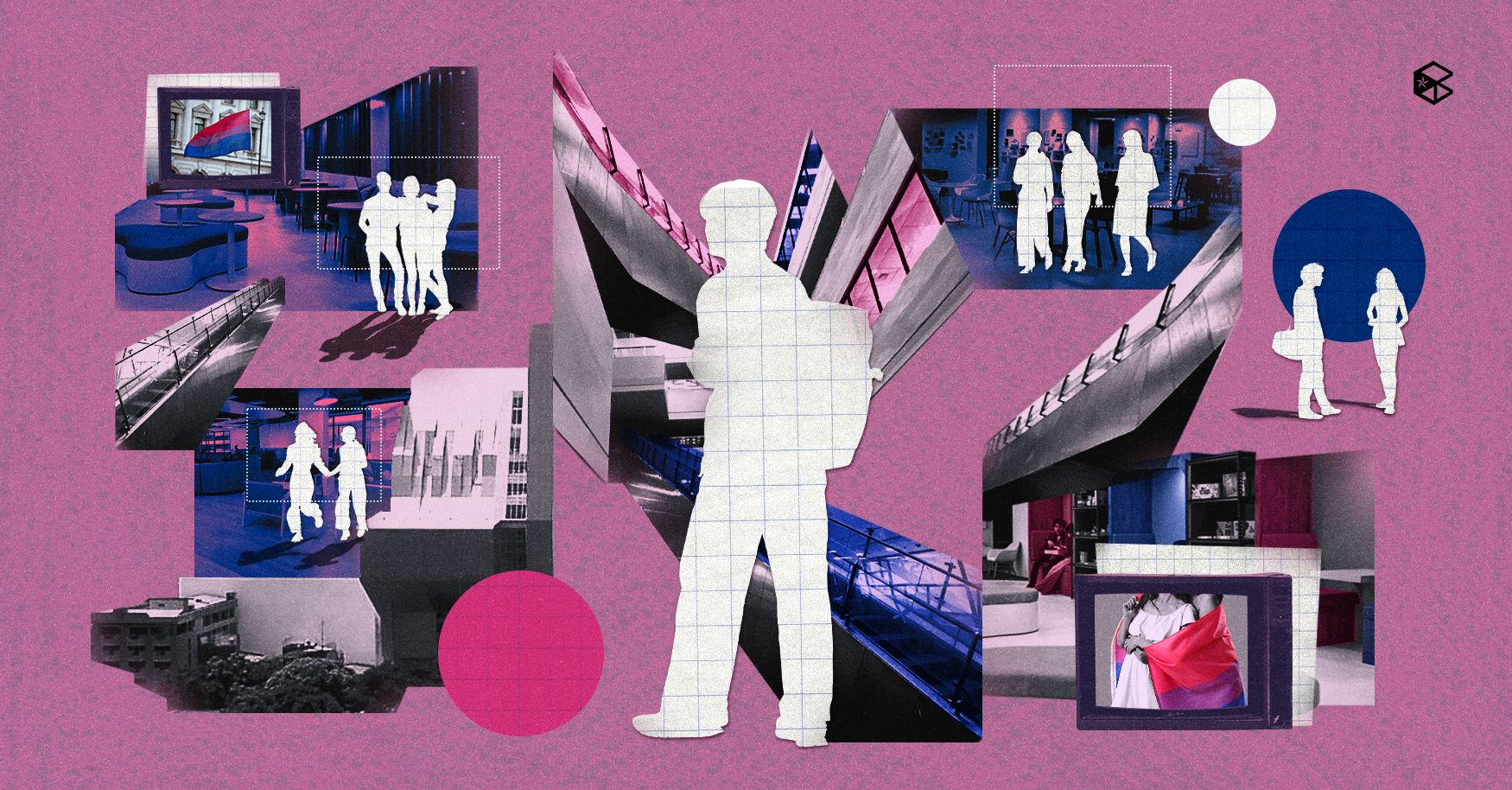Benilde, being an inclusive college, allows students to express themselves freely, fostering connections with the community and increasing their confidence. However, in an interview with The Benildean, multiple students who identify as bisexual have shared their dilemma in finding a safe space for themselves within the College.
Sophia Rivera, an ID123 Multimedia Arts (AB-MMA) student, expressed how she’s already in her third year and she met only a few bisexuals within Benilde, “[...] In my point of view, bisexuals in Benilde are not as expressive in showing their sexuality… It’s easier to find people who are gay, lesbian, or pansexual on campus.”
“[...] I believe it’s because there is no definite sign or indication in terms of appearance that a person is bisexual unless they communicate it directly with words,” Micaella Lim, an ID122 Business Management (BSBA-BM) student, shared in an interview with The Benildean.
Taking all that into consideration, how can we make bisexuality more visible within our campus and country?
Hiding or hidden?
With bisexuality already having troubles with being seen, bisexual men in particular face gender norms that hinder them from self-expression. Rivera shared, based on her observations, how “[...] Bisexual men would be ridiculed with statements that they should be gay instead, or they don’t have the guts to be completely gay.” This shows how society fails to comprehend what being bisexual actually means.
“Another factor could be that people, especially straight men, sexualize and fetishize WLW (women-loving-women) relationships/interactions. Because it fuels their fantasy, they encourage or tolerate it for their personal gain. Because these men don’t fit in their fantasy, they tend to send hate towards them instead,” Rivera added.
Fiction or misrepresentation?
In terms of bisexuality as a whole, ID123 AB-BM student Tiffany Solis expressed her negative experience, “[...] Some will just tell us to pick a side or just call us confused, which is kind of insensitive.” Besides Solis, the other interviewees have also shared how people would deem them confused rather than bisexual.
One of the biggest factors as to why people fail to understand bisexuality is the lack of proper media representation for this specific sector in the LGBTQIA+ community. ID123 Creative Industries Management (AB-CIM) student, Sofia Madamba, mentioned in her interview with The Benildean, “[...] There is actually a historical underrepresentation of bisexuality in Philippine media, and when present it is commonly used to sensationalize the plots of films or shows, which contributes to the stereotyping of the community.”
Madamba added, “[...] Bisexuality gets used to sensationalize plot, often in negative connotations because… these people have attraction to both men and women. The media portrays these characters as promiscuous and also paints [them] flat instead of creating more well-rounded characters with stories that could connect others who may feel the same way… Aside from that, it also feels rather limiting… due to how boxed up the representation is.”
Beyond sensationalism, Solis shared how she thinks the media often focuses on other sexualities. “I feel that bisexuality doesn’t receive much representation, as the media often focuses more on gay or lesbian relationships. These are seen as more straightforward portrayals of LGBTQIA+ identities, especially in a very religious country where people may show tolerance but stop short of fully embracing individuals for who they truly are.”
Visibility in action
“I believe that the media has the power to empower and reduce stigma against bisexual people through accurate representation of the community… They can break away from introducing bisexuality in the context of infidelity, which paints a bad image for the community. They can also stop labeling bisexual individuals as those who are only “confused” about who they really are,” Lim said.
She also added how, “The media can easily shape the views of the public by normalizing the existence of bisexual identities and challenging the stereotypes. An increase in accurate media representation will open more healthy discussions about bisexuality and lead to greater acceptance.”
It’s not just the media that affects bisexuality awareness, schools and the local government should take the initiative to make a change because they have the power to do so. Education is important when it comes to developing the beliefs and knowledge of individuals, our change should start from there. “[...] It will also be better for schools to implement a sexuality education that covers the topic of bisexuality more comprehensively while also debunking common myths and misconceptions, which are often the root of discrimination,” Lim raised.
Let us celebrate Bisexual Day by being more aware of the needed change to occur. To end her interview, Madamba heavily expressed, “To be seen is not to be boxed in a perception that does not allow room for expression.”
“To be seen is to be understood, with the space to allow ourselves to be truly who we are.”


